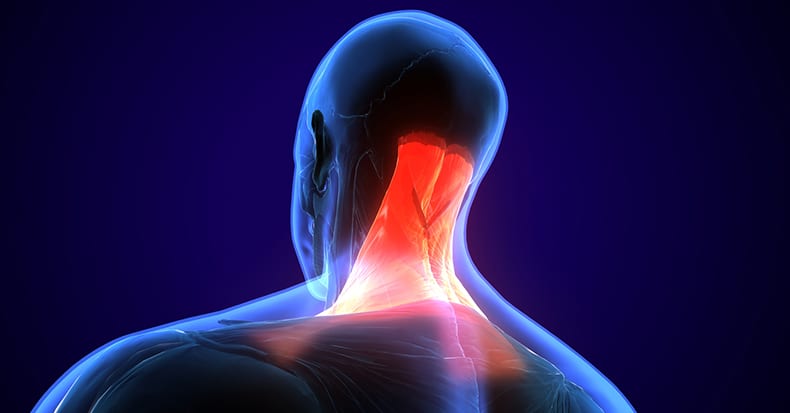Whiplash, as previously discussed, occurs quicker than the speed at which we can voluntarily contract our muscles in attempt to guard ourselves against injury. Hence, it is nearly impossible to properly brace in anticipation of an impending collision. When muscles, ligament, and joint capsules become injured, there is pain, and as a result, reflex muscle spasm occurs as the body attempts to “splint” the area to protect it. This sometimes sets up a vicious cycle which can make the pain last longer, hurt more intensely, and/or hurt more frequently. Because of pain, as well as the direct muscle injury that sometimes occurs in whiplash associated disorders (WAD), the natural tendency is to stop doing many activities and guard against motion for fear of it hurting worse. However, this may lead to muscle atrophy or shrinkage and muscle weakness due to not using the muscle.
There are other reasons that muscles become weak. When an injury occurs, a herniated or “ruptured” disk can injure the spinal nerves exiting the spine. The disk is like a jelly donut where the center is liquid-like surrounded by a thick ring of fibrocartilage and functions as a “shock-absorber” as it sits between two vertebral bodies
Think of the spinal nerves like electrical wires that connect a fuse box to a house. The fuse box is the spinal cord and each wire represents the spinal nerves going to different parts of the house (body). In the cervical spine or neck, each wire goes to different parts like the head, shoulder, arm, and hand and innervates specific areas. Patients who have a pinched nerve from a whiplash injury describe their symptoms as numbness, tingling, pain, and/or muscle weakness in a specific distribution or area.
There are 8 pairs of nerves in the neck that travel to different parts of the head (C1-3), the shoulders (C4, 5), and the arm (C6-T2). Let’s say a patient has numbness and tingling down the arm to the 4th & 5th fingers and the pinky side of the hand. That immediately tells a doctor of chiropractic that the C8 nerve is injured (pinched) because that’s the pain pattern of the C8 nerve. Certain muscles are controlled by C8 that we can test in our office to determine if they are weak (abnormal) or strong (normal).
Chiropractors grade the weakness on a scale from zero to five (five=normal). Subsequent treatment is aimed at un-pinching the nerve in order to help restore normal function. To accomplish this, your doctor may use a combination of treatments such as spinal adjustments, mobilization, traction, exercises, and/or modalities (electric stim, light therapy, ultrasound or others).
